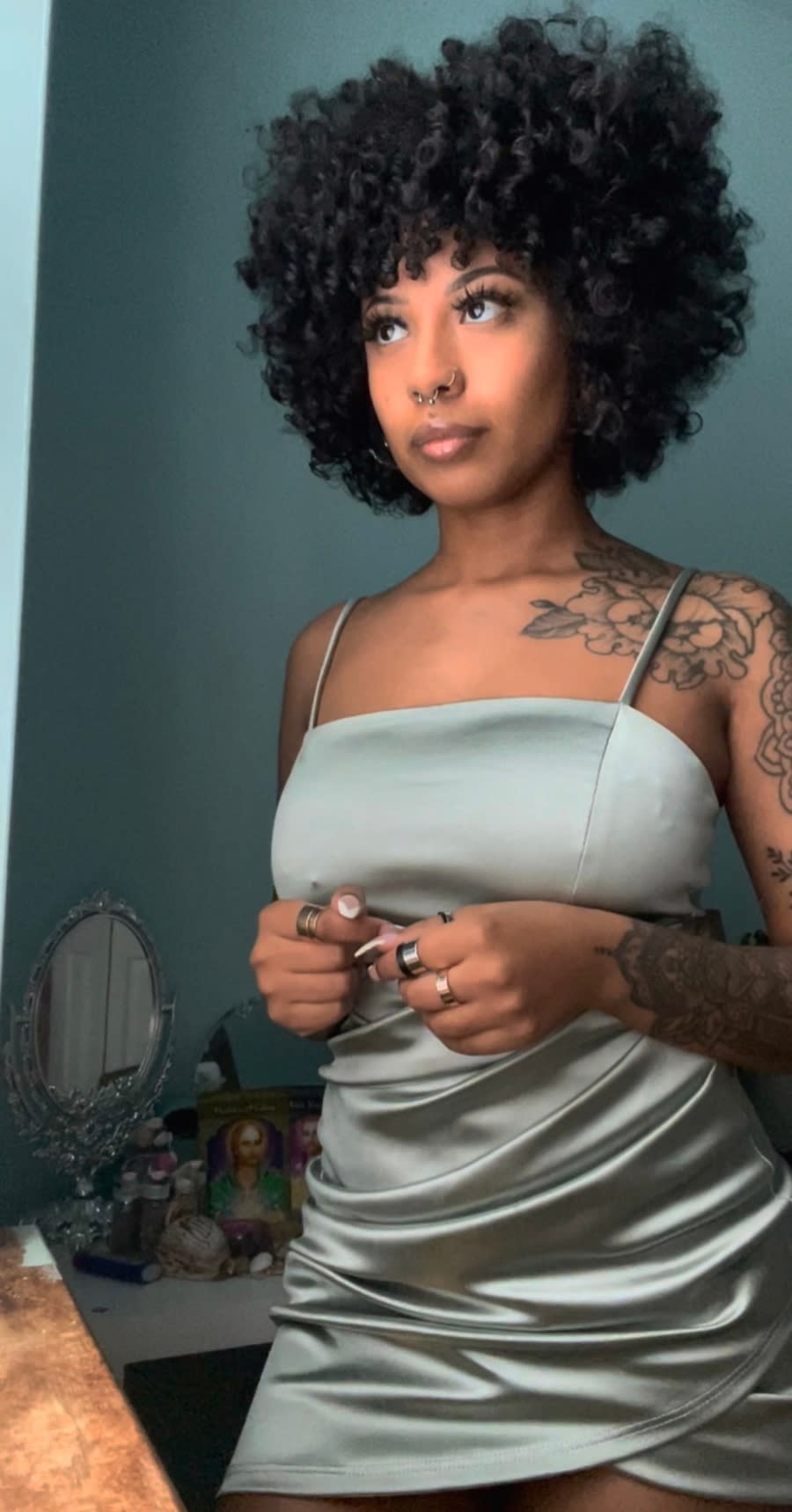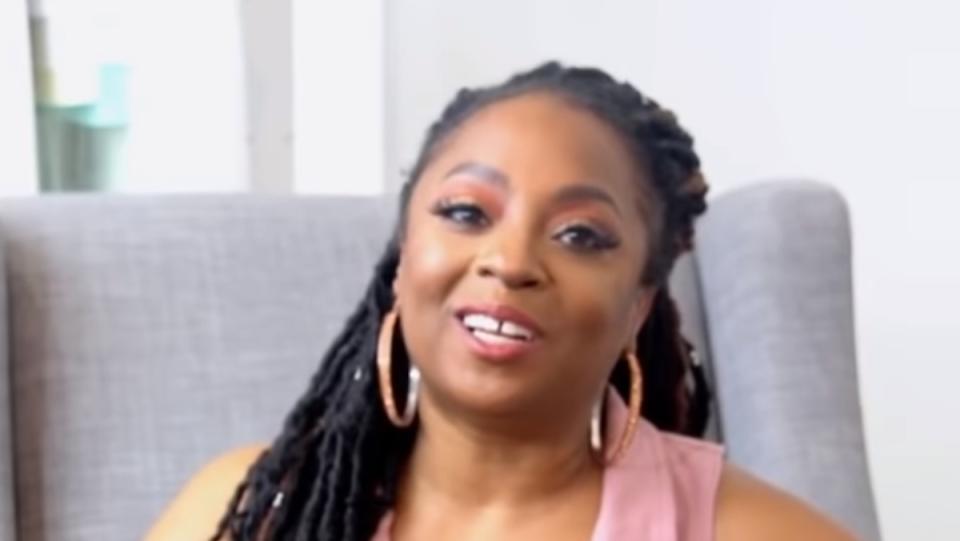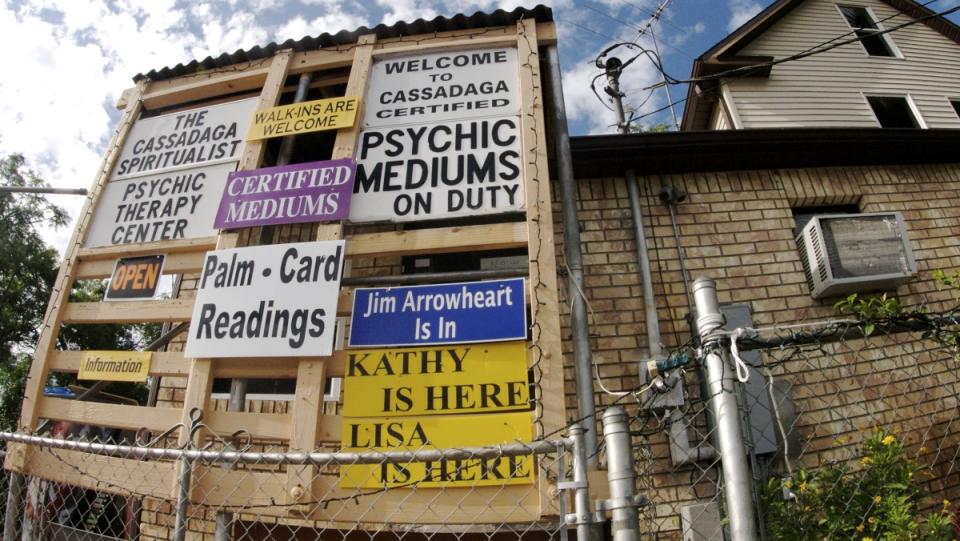Black Mediums Thrive Against Marginalization and Misconceptions
The subject of mediums is certainly a divisive one. It taps into our curiosity about the afterlife, spirits, and the veil between this life and whatever comes next. Some people believe in their work, while others think of the whole industry as a money grab. In either event, general thoughts about what mediums and their clients look like tend to fall into a very narrow space. This often excludes people of color. Outside of TV depictions and talkshow fodder, most people have a limited understanding of what it means to be a medium and how modern practitioners approach their work. Nerdist spoke to two mediums to explore this profession in a more comprehensive way.
The Definition of the Medium
A medium is commonly defined as an intermediary who facilitates communication between our living world and the world of spirit, or “the dead.” However, psychic medium Dr. Lakara Foster offers a slightly different definition. “As a medium, I have the ability to connect to loved ones who have passed,” she tells Nerdist. “Most of the time they are bringing messages of healing, closure, and peace. When I am meeting with someone, I tell them that I am not talking to dead people. All we are is energy. We are energy before we enter these bodies, while we are in them, and when we depart from them. My gift allows me to tap into that energy after departure.”
The New Orleans native knew she could see forms of energy in childhood; however, it wasn’t until her college years that she began to really tap into her ability to help others. Her practice wasn’t necessarily a secret, but it didn’t intersect with her career as a counselor, nor her other pursuits. Now, she’s been on several TV shows and shares her gifts with the world.
“Mediumship is more than connecting with people who lived in our physical world; you’re able to connect with any spirit,” says Kiana Jimenez, a medium and Afro-Caribbean bruja. “You can connect with goddesses, gods, and ascended masters…it doesn’t always have to be with those who have lived on Earth. A lot of mediums just focus on connecting with those who were human, but it’s bigger than that. Mediumship is channeling, and when you channel you use your clairs. Clairvoyance, clairaudience, clairsentience, claircognizant—which is seeing, hearing, feeling, and having that inner knowing. There’s also smelling and tasting, clairalience and clairgustance. Those abilities are the gateway towards establishing a clear connection.”
Each medium’s strengths in different clairs vary. According to Jimenez, they are like any other skill and can become better through active practice and study. Some people use the term “psychic medium” to define their gifts; others shun the word “psychic” due to negative association.

Courtesy of Kiana Jimenez
Jimenez, a Reiki master and energy healer, says her gifts were inherited from her paternal grandmother, a Caribbean witch, and her father, a healer. She was raised Roman Catholic but recalls a lot of paranormal experiences, including sleep paralysis and seeing spirits. Jimenez thought they were imaginary friends but later came to believe that wasn’t the case. As she came into her teenage years, she separated from the church and began to seek her own spiritual path with her older sister’s guidance.
“I never knew I was a medium,” she says. “I just thought it was something that everyone saw, until I began to talk to people. People would ask me how I knew something and I didn’t have a real explanation. Eventually, something just clicked with me and I realized that I am a medium. I began to take classes and get certifications. When I do readings I do platform readings and automatic writing.”
Mediums, Christianity, and Spiritualism
The practice of mediumship spans the globe, appearing throughout different belief systems dating back to early recorded human history. The Bible itself refers to the Witch of Endor, whom Saul consults to call on the spirit of Samuel the prophet to receive advice for a battle against the Philistines. The terms “witch” and “medium” were sometimes interchangeable during this period with certain religious groups seeing their work as ungodly or evil magic.
Dr. Foster occupies an interesting space as not only a medium but also a Christian minister with a PhD in Ministry. She believes mediumship and Christianity are not mutually exclusive. She says that God spoke to her at a funeral one day and said that He promised His people eternal life, but felt people wouldn’t know this without a medium’s gift for affirmation.

Lakara Foster/YouTube
“My doctorate allowed me to do a lot of research on the topic of mediums, physics, and witches,” Dr. Foster states. “I got to look at different versions of the Bible, who wrote them, and what was happening during this time. Earlier versions didn’t not condemn these people but later versions did. There’s a reason for that. King James felt like people shouldn’t consult witches, mediums, and psychics. He pretty much lumped them all into one category, but really he had a problem with witches.”
Dr. Foster continues, “For myself, it was understanding who I am as an African-American and what were these gifts like before we were introduced to Christianity. What did we study and learn? How did we combine those together? I found that the two can be reconciled.”
Mediumship’s popularity grew in United States and the UK during the 19th century thanks to Spiritualism. This belief system hinges on the concept of living people connecting to the spirit world. During this period of frequent death, people would seek mediums to perform seances. (A seance is a ritual that allows a spirit to communicate directly through a medium’s body.) The profession became marred by opportunists like the Davenport Brothers, whose fraudulent stage tricks became a source of disrepute. This led to a sharp decline in physical mediumship and seances; however, other communication methods soon came to rise in subsequent decades.
Mediums and Modern Popular Culture
Interestingly, the majority of mediums in TV and film fall into the physical category, with a mysterious person channeling a spirit with a message. But there has always been a wide variety of methods that mediums use for communication purposes.
“Every medium has different abilities and ways to communicate with spirit,” says Jimenez. “Some do trance work, so they combine their physical body with the soul of the spirit, entity, or god they are communicating with. Their facial expressions and tone of voice change. Then you have mental mediumship, which is the mainstream type we see with people like Teresa Caputo and Tyler Henry doing platform readings. They are either writing, which is called automatic writing, or speaking to the person they are giving a reading to about what they are seeing or hearing.”
Mediumship saw a significant rise in the 1990s thanks to episodes of The Oprah Winfrey Show, among others, featuring mediums explaining paranormal happenings or answering audience questions. People would jam Larry King Live‘s phone lines to get answers from famous medium John Edward. Whether it’s pure curiosity, disbelief, desperation, the insatiable human need for entertainment, or all of the above, people still want to see and seek the services of mediums.
The Marginalization of Mediums of Color
Throughout history, white mediums have received the most mainstream attention. Mediums of color, specifically those who practice Voodoo, Vodun, and Shamanism, have been shunned or ignored at best and demonized at worst. These stigmas have permeated decades of culture, with a long list of movies featuring shamans harboring dark and harmful knowledge. (Not to mention films like Ghost leaning into the “wise magical Negro guides white protagonist” trope.) It feeds into the pervasive idea that a POC doing something is evil and suspect, but when a white person does the same thing, its trendy or intriguing.
This racist and dangerous mindset causes a problem for both practitioners and those seeking their services. A quick Google or Twitter search for mediums produces results that are overwhelmingly white women. We’ve seen people like the Theresa Caputo a.k.a. The Long Island Medium and Allison DuBois go from regular spots on talk shows and radio to their own television programs.
Mediums of color don’t get that same recognition and access; this leads many people to believe that mediumship doesn’t include a lot of representation across racial and cultural lines. And that’s simply not true.
“There needs to be more visible diversity in mediumship,” Jimenez states. “The lack of it hurts minority mediums because we never get that spotlight. I understand that they have their gifts, but why do they get everything while we pretty much don’t exist? We have the same gifts, even if we approach things differently. There needs to be a lot of change in mediumship and the spiritual communities in general.
Jimenez feels as though “some people in certain practices who speak up are called ‘evil’ and not up to some standard.” She adds, “When it comes to a Western perspective, many people are attracted to chakras and love and light and that’s not all there is to spirituality. We are still human beings and we need to balance our light and our dark. When it comes to many white mediums and spiritualists, everything is ‘angels.’ Nope. That’s why I’m doing what I am doing now with my classes and getting my work out.”
Jimenez points to economic inequity as an additional factor in this gap. She and with her sister combat economic disadvantages with their own free and discounted courses to help people of color gain the knowledge they need to offer service to others.
“When it comes to getting certified for mediumship and other spiritual practices, it is too expensive,” she says. “If you are coming from some African-American communities, you may not be able to drop $500 dollars for a four-week class. That keeps minorities out of the room and leads to more white people who do have the funds to get into those classes. They are able to get that additional knowledge and go on to build their businesses.”
Hello to my new followers! I’m Ki! I’m a Psychic Medium, Trance Healer & Spiritual Mentor. I’m blessed to be able to share my gifts and knowledge with my clients & students!
— Baby Ki
Readings are open (@afrobruja) March 5, 2021
Pushing mediums of color to the margins then becomes a problem for people of color who want to seek a professional medium. Systemic and institutional racism plays a large role in how many people of color move through the world. They often seek doctors, dentists, and other health and wellness professionals of their same identity in hopes of curbing issues that can arise from seeing someone who doesn’t understand and/or respect their cultural and spiritual practices, or who harbors unconscious biases against them.
For example, a Black woman may not want to go to a white doctor who is more apt to dismiss her physical pain, especially with proven research that this happens too often. Therefore, it would make sense for a person of color to seek a medium from a similar background; this medium would likely understand their beliefs about death, the afterlife, and how they wish to connect with loved ones. This is not saying that any medium cannot be beneficial to a person from a different race or cultural background; however, there’s a different level of camaraderie and comfort for people of color with such a sensitive issue.
“Majority of my work is done with Black women,” Dr. Foster confirms. “Many of them come to me because they heard me talking about God and being a Christian. I think them knowing that and finding someone who reconciles the two makes them more comfortable. Being from New Orleans, we took field trips to visit graveyards and see Marie Laveau’s grave. We learned about slaves and such. This was commonplace in my childhood and normal. It didn’t take much for me to connect with my gifts and do the work.”
Medium Gifts in Motion

Willy Volk/Flickr
Depending on a medium’s specific gifts, the preparation process for a session varies widely. Dr. Foster uses speaking (through her own voice) to communicate and automatic writing to relay messages. “Most of the people I connect with are stuck at some level of grief,” she says. “This creates these blockages or obstacles that keeps them from getting to their God given purpose. So, when spirit connects with me, it allows them to get free. They can get past certain levels of grief so they can fulfill their life’s purpose.”
She sets the tone with clients that, again, she’s not talking to the dead. Dr. Foster tells them that they cannot control who comes through nor the message and she will often get symbols or numbers which she writes down. She allows spirit to take control and knows the energy of whose in the room. Each session lasts about 30 minutes and she says that people tend to feel a sense of relief and empowerment by the end. She encourages them to continue making this connection, telling them that once they realize the energy is there, they don’t need a medium to speak directly to a loved one.
Kiana’s approach is somewhat similar with platform readings with automatic writing. In a “typical” session, she starts off with a simple conversation with clients to put them at ease and their background with mediums. Jimenez says it’s vital for them to be open so she’s able to establish and maintain a clear connection. She then explains her gifts and the session begins with her centering herself before connecting and starting to write. There’s typically confirmation of the messages from the client as well as new things that bring them peace and clarity.
Neither medium has run into a client with a determination to prove them wrong. Rather, its usually a person whose uncertainty and skepticism turns into belief after a session. There are undoubtedly many people who do not believe in their abilities and work; but they don’t try to force anyone to change their minds. Many things in the world occur without scientific reason nor explanation and mediumship is no different. And, it’s up to a person to acknowledge, respect, and properly use their gifts to help others, if they so desire.
“There are a lot of skeptics,” Jimenez says. “What I love about skeptics is that there’s still that curiosity. They are questioning their beliefs but their ego steps in to tell them that it’s not real. They don’t want it to be real. But, when they come in for a reading, that changes that there perspective…We live in this society base where everything has to be structured in some way because others say that’s what it is. But is it really? It’s amazing when I see people who step into their power and see things through a unique perspective. That’s why I love what I do.”
Jimenez adds, “I share my beliefs and my gifts and it changes things for people. I love when my clients are healed from their past traumas. I want to empathize and help people heal in that vulnerable space. You have to be an empathetic and authentic person to do that.”
The need to understand, honor, and connect with those who are no longer physically here will never cease. Across religious movements and the many thoughts about what comes next, there’s a medium for virtually every person. It’s a practice full of intrigue and, for some people, a gateway to healing and moving forward. And no, it’s not just a “white people thing” for pure entertainment.
The post Black Mediums Thrive Against Marginalization and Misconceptions appeared first on Nerdist.

